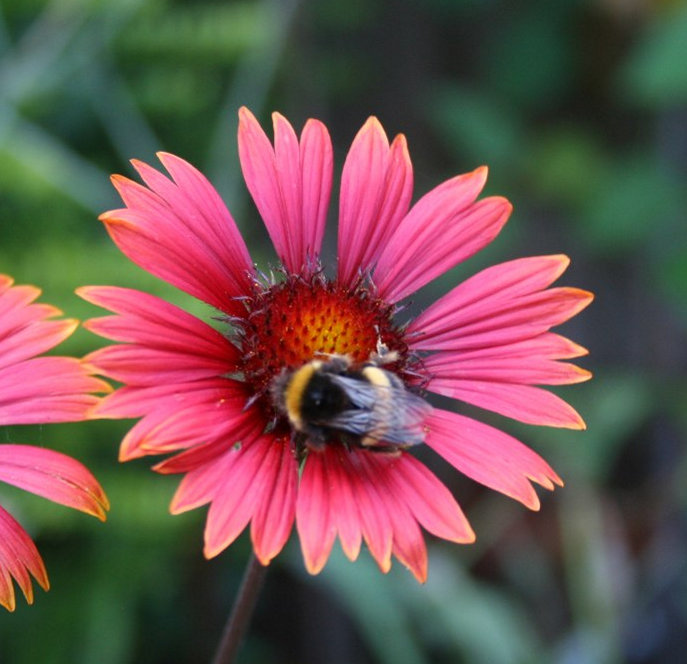- Home
- Garden Science
- Garden Biodiversity
- Native and non-native species
- Home
- Garden Science
- Garden Biodiversity
- Gardens: native and non-native species
Gardens: native and non-native species
Native species
Native species in a country (or region) are those that got there without the involvement of people. They either arrived through dispersion or perhaps evolved there. Non-native species by contrast arrived relatively recently through deliberate or accidental human introduction.
Native species and gardens
Typical British gardens contain plenty of native plant species, some of which we call weeds, but also many non-native species, chosen for their size, shape and attractive flowering. The use of these common garden plants is one of the few controversial aspects of wildlife gardening.
It is common sense that native wildlife species have depended on native plants, and many older wildlife gardening books strongly recommend that wildlife gardens should be planted with native species. The problem is that gardeners like splendid foreign plants, and can be turned away from wildlife gardening if they are told to put their garden down as a sort of weedy nature reserve.
So what is the hard science behind this issue? Are non-native plants useless to support wildlife in our gardens? This is a very important question, and we have put together a lengthy leaflet, "What is the relative value for wildlife of native and non-native plants in our gardens? which you can download and read if you wish.
Britain’s native flora (and fauna)
First, some ancient history. The last Ice Age finished only about 9,500 BC, and left a ravaged landscape with none of the plants we now find here. These had to migrate from the continent of Europe, across a land-bridge over the southern North Sea, before rising sea water levels cut our islands off about 6,000BC. This was a very short period, and only about 1,600 plants made it in time, far fewer than a country of our size and varied geology should support. Our native animal fauna is pretty poor too. We have only 59 species of butterflies, compared with 89 in the small area of Upper Normandy in France, just over the channel.
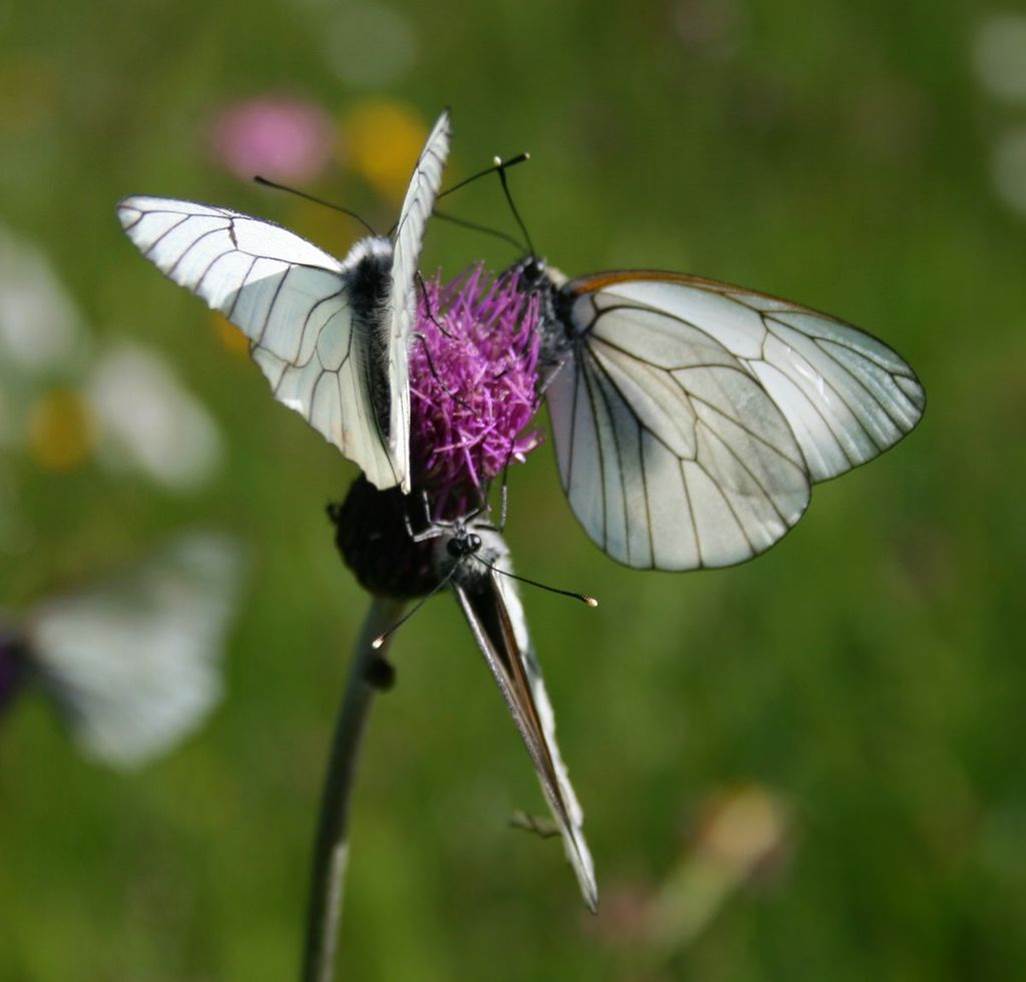
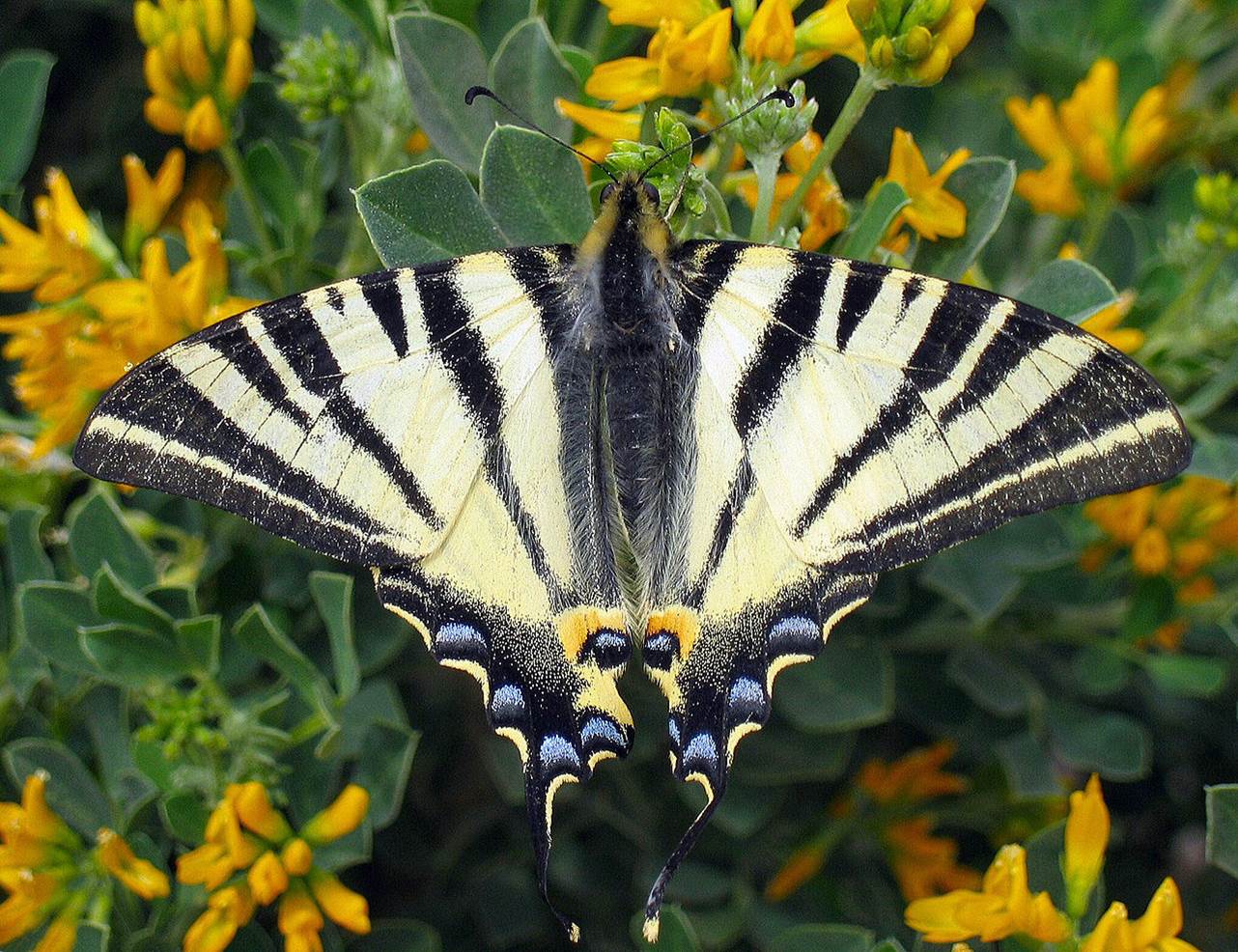
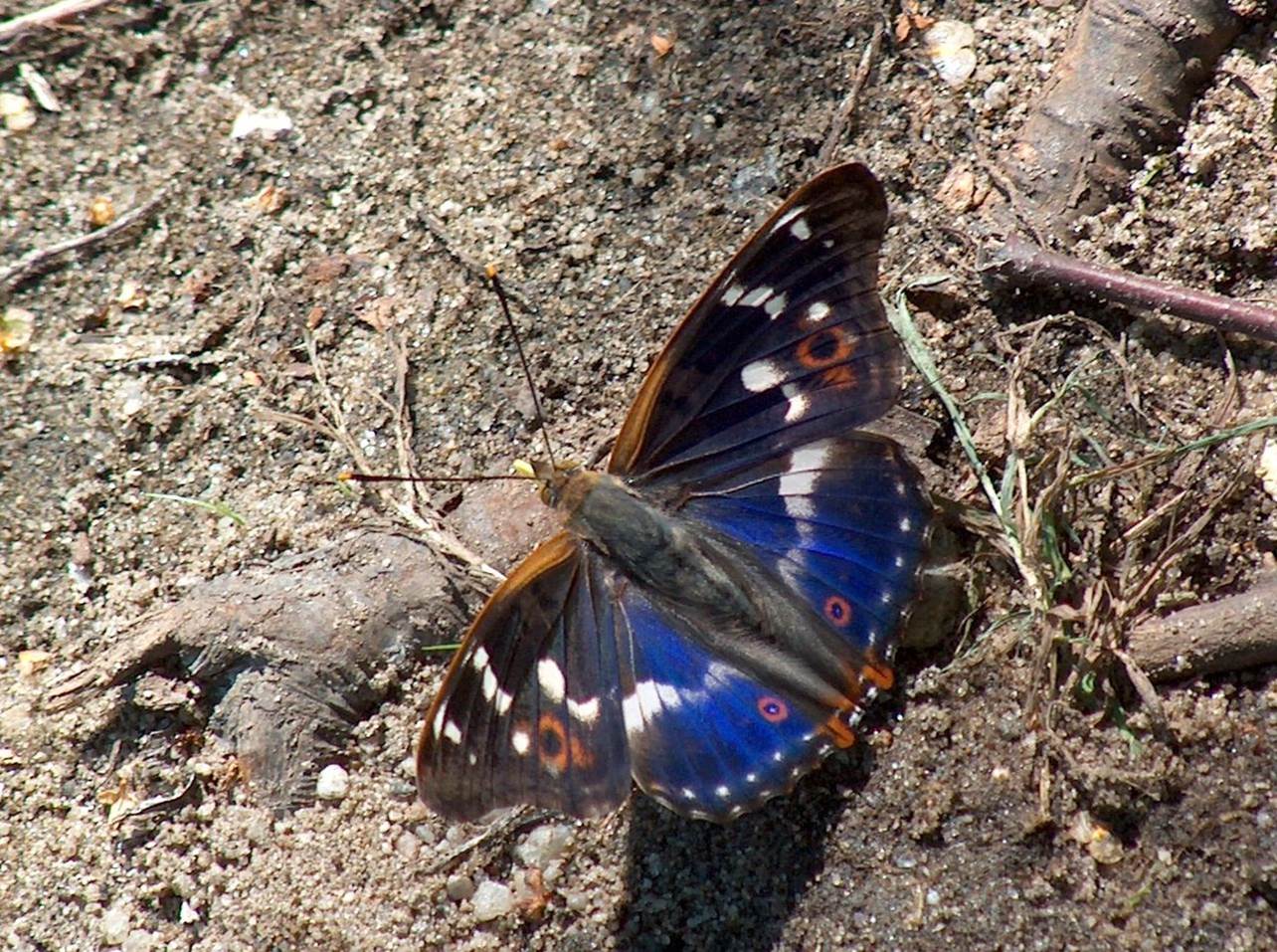
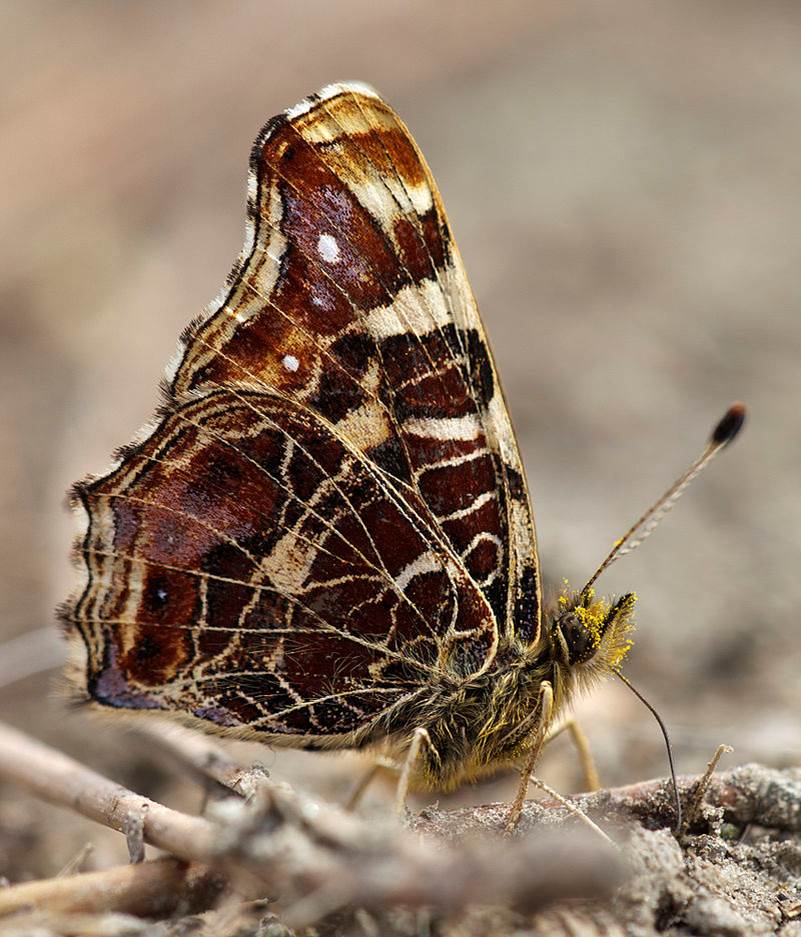
Four butterflies found in Normandy but not in Britain: (L to R) black veined white, scarce swallowtail, lesser purple emperor and the map butterfly
Our plants and animals have had very little time to adapt to each other and to their new homes in our islands, and we have very few plants, and even fewer animals which have evolved into species unique to the British Isles. Even these are very similar to common continental species. It could be argued that a lot of plant and animal species are “missing” from Britain, which is only an isolated, biologically impoverished island on the edge of the Western Palaearctic ecozone, which broadly comprises all Europe and countries east to the Urals, the near east and North Africa.
Origins of our non-native species
Mesolithic hunter-gatherers arrived in Britain immediately after the Ice Age, but it was the Neolithic agricultural revolution that first brought in new species of crops and their associated arable weeds, which originated in the near east. Increasing international trade brought a steady increase in imported species, first from elsewhere in the western Palaearctic, then from Asia and eventually the new world. We now have over 50,000 species and varieties of non-native plants in our gardens, and nearly 1,800 have become “naturalised”, firmly established, outside farms and gardens, in the countryside.
Problem non-native species
A very small number (about 100) of our naturalised plant arrivals have become a problem in the countryside, growing sufficiently aggressively to damage or threaten our semi-natural habitats. Classic examples are Rhododendron, Japanese knotweed (left), and several aquatic plants such as Australian stonecrop.
Other countries have similar problems, and the spread of small numbers of invasive non-natives has been identified as one of the major global threats to biodiversity. It is vital that we prevent the spread (as far as we can) of these major problem species.
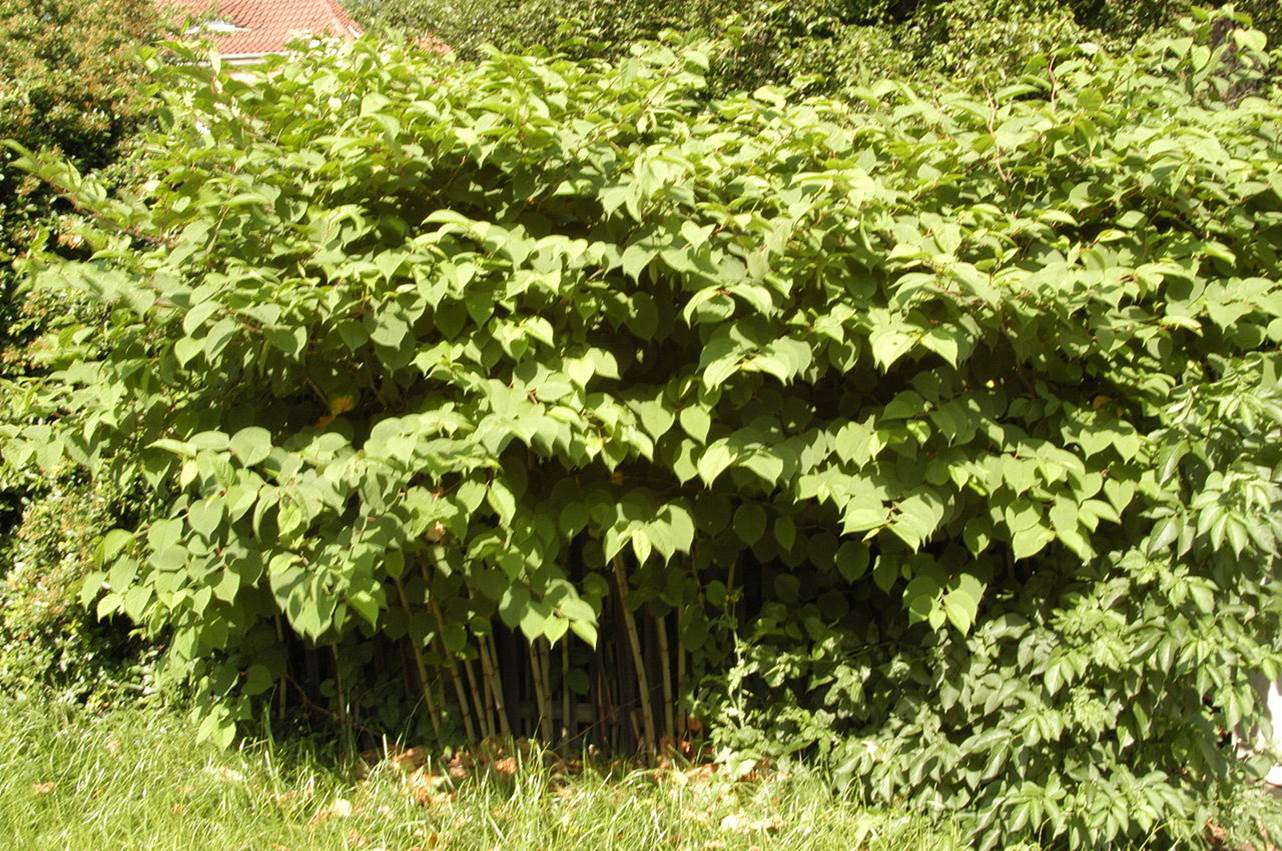
In Britain, the Wildlife and Countryside Act controls the release of such species in the wild, and although they can legally be grown in gardens, this is highly inadvisable. We have a list of the banned plant species here. See also our page on Plants to avoid.
What about the other non-native species?
Unfortunately, valid concerns about the few real problem plants has given a bad name to all non-native species, nearly all of which have caused no problems at all. In fact about half the non-native plants in our garden are near-neighbours anyway, having come from within the western Palaearctic ecozone of which we are part. Even conservationists value many non-natives, especially the now rare arable weeds like pheasant’s eye or cornflower, and give them special protection. They are now called “archaeophytes” and are treated as indigenous honorary natives. The definition is now stretched to include plants arriving before 1500 (if that is we like them!) so even the pernicious garden weed ground elder (which came in with the Romans) could be seen as an archaeophyte. The distinction between native and non-native is getting very blurred. So is the meaning, in horticulture at least, of the term “wildflower”, which is now being used to describe “natives plus archaeophytes”, instead of a plant growing naturally in the wild. See Ken Thompson’s personal take on this terminology in our leaflet here.
What role could non-native plants have for garden wildlife?
Plants interact with animals in four basic ways, and for two of these it is unlikely that native or non-native distinctions matter. Larger plants, especially trees and shrubs provide shelter, and dead plant material fuels the many detritus feeders and decomposers that are vital to garden ecology.
This leaves the role flowering plants have in providing nectar and pollen for insects like bees and hoverflies, which in turn provide a pollination service for the plants. Then the adults of some insects, and the larvae of many more, are herbivores, feeding on the living tissue or sap of your garden plants. It is a fair assumption that some insects are very specialised in their tastes, and that for them non-native plants may not be suitable. What is the evidence?
Pollinators and non-native plants
The plight of pollinating insects has drawn a lot of recent attention, and a number of research studies have looked at how they interact with native and non-native plants.
While some insects, such as bumblebees and hoverflies prefer certain shapes of flowers, they can find suitable plants among non-native as well as native species.
Generally, the more flowers, and the more nectar and pollen plants contain, the better they are liked, and many non-native plants score very highly here.
Furthermore, gardens with a succession of flowers selected to bloom throughout the year provide important resources for pollinators when our native species have finished flowering. Surprisingly, the nearby presence of gardens actually improves pollination in some crop species. The one study that added native plants to gardens to test their impact on pollinators found no change, and the pollinators still went for the richly flowering non-natives.
This suggests that pollinator species like bees and some hoverflies can benefit greatly from non-natives, because they can find food for all their life stages in gardens. This may not be true for insects which have herbivorous larval stages like butterflies.
Herbivores and non-native plants
There is rather less evidence for herbivores in gardens, and it is more equivocal. There is no doubt whatsoever, that many non-native plants can support many wildlife species. In Jennifer Owen’s Leicester garden, eleven of the top 15 species eaten by herbivores were non-native. American studies, focussing only on the use of woody trees and shrubs found strong evidence that native plant species were much more valuable than non-natives. It isn’t clear how relevant these studies would be to typical British gardens, but read our leaflet to find out the arguments each way.
Other American, and European studies have come to different conclusions, finding many herbivores using or even depending on non-native plants, while some insects seem to be shifting their preference towards common non-native plants. In particular, insects used to eating one sort of native plant, are much more likely to accept a foreign food plant if it is closely related to the one they are accustomed to. As Jennifer Owen observed, if a plant is in the right family, it doesn’t matter a lot whether it’s native or alien. With so many garden species originating from the same ecozone and related to our natives, this means a lot of potential.
However, while non-natives definitely support many generalist or “polyphagous” species, there remain specialist insects, including some moths and most butterflies, that need specific native plants. It is very likely that planting certain native plant species would be of benefit to some target insects, provided that they are living in your area, can find your garden, and find enough of the plants to be useful. This would need careful thought and planning, but could be a valuable project.
Conclusions
There isn’t much evidence that changing gardening practice to concentrate on native species alone would have any great value, and some of the benefits of gardens for pollinators would be lost. Above all, we must remember that typical gardens, with a preponderance of non-natives have tremendous biodiversity, above that of other British semi-natural habitats. But it is also fair to say we need more research, such as the Plants for Bugs project, and that carefully planned native planting might be of value for some species.
Leaflets available as pdf files from this page:
What is a wildflower? by Ken Thompson
Other pages in this site to look at for this topic:
Plants and Planting: Native or non-native?
Written by Steve Head and Ken Thompson Reviewed by Andrew Salisbury
Gardens: native and non-native species
Native species
Native species in a country (or region) are those that got there without the involvement of people. They either arrived through dispersion or perhaps evolved there. Non-native species by contrast arrived relatively recently through deliberate or accidental human introduction.
Native species and gardens
Typical British gardens contain plenty of native plant species, some of which we call weeds, but also many non-native species, chosen for their size, shape and attractive flowering. The use of these common garden plants is one of the few controversial aspects of wildlife gardening.
It is common sense that native wildlife species have depended on native plants, and many older wildlife gardening books strongly recommend that wildlife gardens should be planted with native species. The problem is that gardeners like splendid foreign plants, and can be turned away from wildlife gardening if they are told to put their garden down as a sort of weedy nature reserve.
So what is the hard science behind this issue? Are non-native plants useless to support wildlife in our gardens? This is a very important question, and we have put together a lengthy leaflet, "What is the relative value for wildlife of native and non-native plants in our gardens? which you can download and read if you wish.
Britain’s native flora (and fauna)
First, some ancient history. The last Ice Age finished only about 9,500 BC, and left a ravaged landscape with none of the plants we now find here. These had to migrate from the continent of Europe, across a land-bridge over the southern North Sea, before rising sea water levels cut our islands off about 6,000BC. This was a very short period, and only about 1,600 plants made it in time, far fewer than a country of our size and varied geology should support. Our native animal fauna is pretty poor too. We have only 59 species of butterflies, compared with 89 in the small area of Upper Normandy in France, just over the channel.



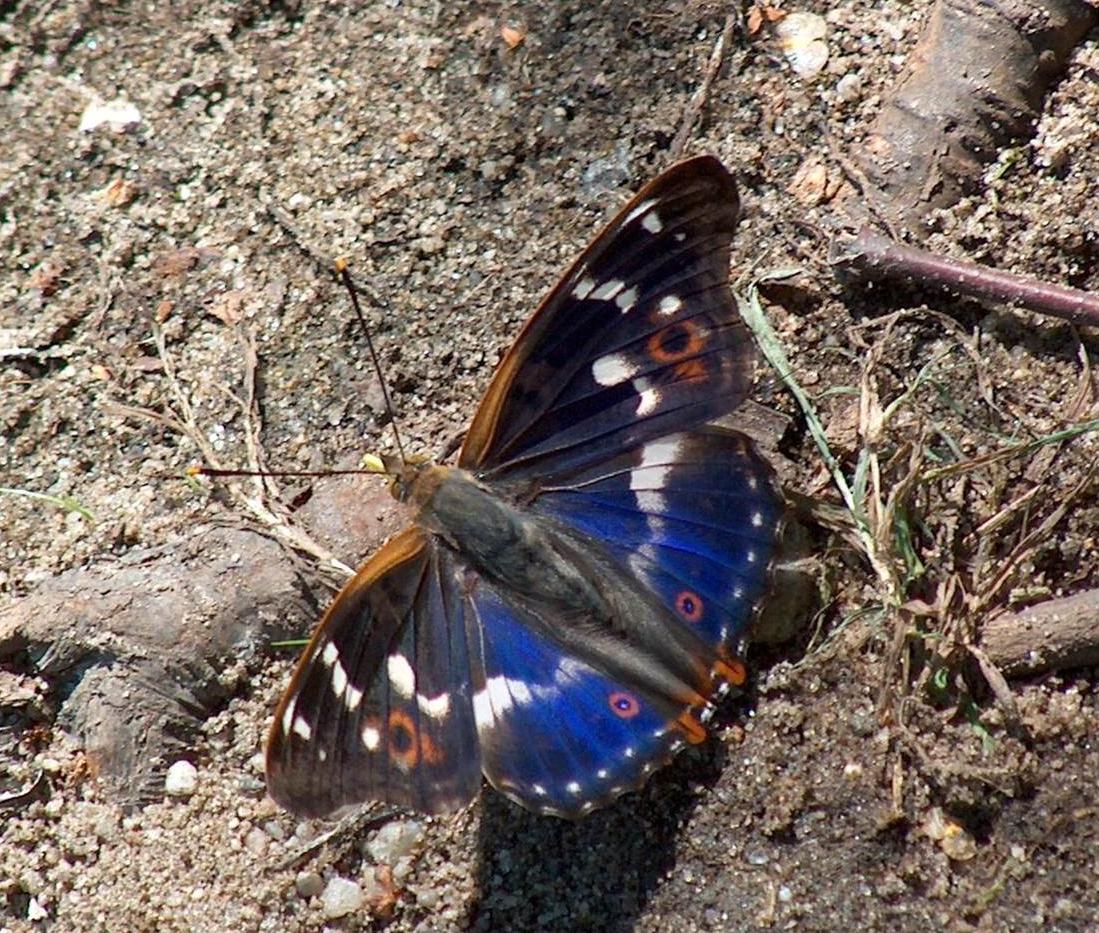
Four butterflies found in Normandy but not in Britain: (L to R) black veined white, scarce swallowtail, lesser purple emperor and the map butterfly
Our plants and animals have had very little time to adapt to each other and to their new homes in our islands, and we have very few plants, and even fewer animals which have evolved into species unique to the British Isles. Even these are very similar to common continental species. It could be argued that a lot of plant and animal species are “missing” from Britain, which is only an isolated, biologically impoverished island on the edge of the Western Palaearctic ecozone, which broadly comprises all Europe and countries east to the Urals, the near east and North Africa.
Origins of our non-native species
Mesolithic hunter-gatherers arrived in Britain immediately after the Ice Age, but it was the Neolithic agricultural revolution that first brought in new species of crops and their associated arable weeds, which originated in the near east. Increasing international trade brought a steady increase in imported species, first from elsewhere in the western Palaearctic, then from Asia and eventually the new world. We now have over 50,000 species and varieties of non-native plants in our gardens, and nearly 1,800 have become “naturalised”, firmly established, outside farms and gardens, in the countryside.

Problem non-native species
A very small number (about 100) of our naturalised plant arrivals have become a problem in the countryside, growing sufficiently aggressively to damage or threaten our semi-natural habitats. Classic examples are Rhododendron, Japanese knotweed (left), and several aquatic plants such as Australian stonecrop.
Other countries have similar problems, and the spread of small numbers of invasive non-natives has been identified as one of the major global threats to biodiversity. It is vital that we prevent the spread (as far as we can) of these major problem species.
In Britain, the Wildlife and Countryside Act controls the release of such species in the wild, and although they can legally be grown in gardens, this is highly inadvisable. We have a list of the banned plant species here. See also our page on Plants to avoid.
What about the other non-native species?
Unfortunately, valid concerns about the few real problem plants has given a bad name to all non-native species, nearly all of which have caused no problems at all. In fact about half the non-native plants in our garden are near-neighbours anyway, having come from within the western Palaearctic ecozone of which we are part.
Even conservationists value many non-natives, especially the now rare arable weeds like pheasant’s eye or cornflower, and give them special protection. They are now called “archaeophytes” and are treated as indigenous honorary natives.
The definition is now stretched to include plants arriving before 1500 (if that is we like them!) so even the pernicious garden weed ground elder (which came in with the Romans) could be seen as an archaeophyte. The distinction between native and non-native is getting very blurred.
So is the meaning, in horticulture at least, of the term “wildflower”, which is now being used by some to describe “natives plus archaeophytes”, instead of a plant growing naturally in the wild. See Ken Thompson’s personal take on this terminology in our leaflet here.
What role could non-native plants have for garden wildlife?
Plants interact with animals in four basic ways, and for two of these it is unlikely that native or non-native distinctions matter. Larger plants, especially trees and shrubs provide shelter, and dead plant material fuels the many detritus feeders and decomposers that are vital to garden ecology.
This leaves the role flowering plants have in providing nectar and pollen for insects like bees and hoverflies, which in turn provide a pollination service for the plants. Then the adults of some insects, and the larvae of many more, are herbivores, feeding on the living tissue or sap of your garden plants. It is a fair assumption that some insects are very specialised in their tastes, and that for them non-native plants may not be suitable. What is the evidence?
Pollinators and non-native plants
The plight of pollinating insects has drawn a lot of recent attention, and a number of research studies have looked at how they interact with native and non-native plants.
While some insects, such as bumblebees and hoverflies prefer certain shapes of flowers, they can find suitable plants among non-native as well as native species
Generally, the more flowers, and the more nectar and pollen plants contain, the better they are liked, and many non-native plants score very highly here.
Furthermore, gardens with a succession of flowers selected to bloom throughout the year provide important resources for pollinators when our native species have finished flowering. Surprisingly, the nearby presence of gardens actually improves pollination in some crop species. The one study that added native plants to gardens to test their impact on pollinators found no change, and the pollinators still went for the richly flowering non-natives.
This suggests that pollinator species like bees and some hoverflies can benefit greatly from non-natives, because they can find food for all their life stages in gardens. This may not be true for insects which have herbivorous larval stages like butterflies.
Herbivores and non-native plants
There is rather less evidence for herbivores in gardens, and it is more equivocal. There is no doubt whatsoever, that many non-native plants can support many wildlife species. In Jennifer Owen’s Leicester garden, eleven of the top 15 species eaten by herbivores were non-native. American studies, focussing only on the use of woody trees and shrubs found strong evidence that native plant species were much more valuable than non-natives. It isn’t clear how relevant these studies would be to typical British gardens, but read our leaflet to find out the arguments each way.
Other American, and European studies have come to different conclusions, finding many herbivores using or even depending on non-native plants, while some insects seem to be shifting their preference towards common non-native plants. In particular, insects used to eating one sort of native plant, are much more likely to accept a foreign food plant if it is closely related to the one they are accustomed to. As Jennifer Owen observed, if a plant is in the right family, it doesn’t matter a lot whether it’s native or alien. With so many garden species originating from the same ecozone and related to our natives, this means a lot of potential.
However, while non-natives definitely support many generalist or “polyphagous” species, there remain specialist insects, including some moths and most butterflies, that need specific native plants. It is very likely that planting certain native plant species would be of benefit to some target insects, provided that they are living in your area, can find your garden, and find enough of the plants to be useful. This would need careful thought and planning, but could be a valuable project.
Conclusions
There isn’t much evidence that changing gardening practice to concentrate on native species alone would have any great value, and some of the benefits of gardens for pollinators would be lost. Above all, we must remember that typical gardens, with a preponderance of non-natives have tremendous biodiversity, above that of other British semi-natural habitats. But it is also fair to say we need more research, such as the Plants for Bugs project, and that carefully planned native planting might be of value for some species.
Leaflets available as pdf files from this page:
Species banned from release in the wild under Section 9 of the Wildlife and Countryside Act
What is a wildflower? by Ken Thompson
Other pages in this site to look at for this topic:
Plants and Planting: Native or non-native?
Written by Steve Head and Ken Thompson Reviewed by Andrew Salisbury
